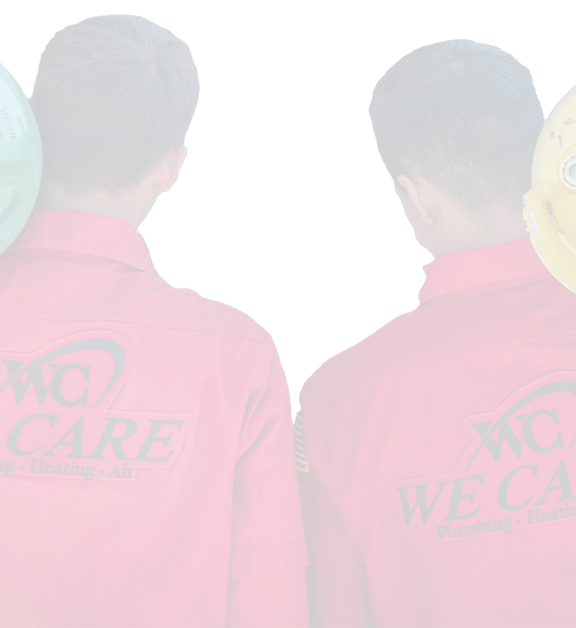Hot and cold spots are a fairly common issue with central HVAC systems and can happen for a variety of different reasons. This article will explore some of the causes behind this problem and offer helpful tips for ensuring your HVAC system evenly distributes conditioned air to every part of your house.
Replace Your HVAC System’s Air Filter
Regularly replacing the air filter is one of the simplest yet most important tasks for ensuring your central heating and cooling system operates effectively. A dirty air filter can lead to a range of issues. The main problem is that it restricts the amount of air your system can draw in, causing it to circulate less warm or cool air. You may still have enough airflow to keep the main areas of your home comfortable. However, the rooms farthest from your heating or cooling system will not receive enough conditioned air, resulting in cold or hot spots.
Experts recommend replacing HVAC filters at least every three months. However, you may have to change yours out more often. Filters can get dirtier faster due to factors like pets, the number of people in your household, and frequent guests. Many homeowners check their HVAC filters once a month to ensure they know when to replace them with fresh ones.
Have Your HVAC System Inspected and Maintained Annually
It’s essential to have your HVAC system professionally inspected and maintained regularly. This service helps ensure your HVAC system provides even and effective heating and cooling. If your home uses both central heating and air conditioning, it’s recommended to schedule service and inspections twice a year, once for the heater in the fall and once for your air conditioner in the spring.
Two key factors contributing to proper airflow through your HVAC system are a clean blower operating at the correct speed and fully sealed ductwork. Dust can accumulate if the blower isn’t cleaned regularly during annual maintenance, reducing its ability to circulate air efficiently. This results in weak airflow, especially in rooms farthest from the air handler.
Ductwork leaks can be an even bigger issue, allowing air to escape before it reaches its intended destination. Leaky ducts can reduce your HVAC system’s efficiency by as much as 30%, leading to higher energy bills and hot and cold spots. Annual maintenance visits usually do not include a thorough inspection of your ductwork. However, you should contact an HVAC technician to inspect and reseal your ducts at least every 10 years.
Get Your Air Ducts Cleaned
Dirty air ducts can also contribute to hot and cold spots in your home. Over time, dust and debris build up inside your ducts, creating obstructions that restrict both the volume and speed of air circulation.
Not only do dirty ducts reduce airflow, but they can also increase energy costs and contribute to excessive wear and tear on the system. Over time, this can shorten the lifespan of your heating and cooling equipment. To maintain optimal airflow and system performance, hiring a professional to clean your ducts every few years is a good idea. This practice ensures that your system runs smoothly and also can help maintain your indoor air quality.
Make Sure Your Vents Are Open and Unobstructed
You might think that closing some vents helps to heat or cool the main parts of your house more effectively, but this isn’t the case. Instead, your HVAC system circulates air throughout your house much more effectively when most or all of your supply vents are open. Closed vents cause air to get trapped in part of the duct system.
This scenario leads to the pressure within the ducts increasing, which in turn creates additional resistance that prevents air from circulating through the system as well as it should. You can sometimes close a few vents without creating too much of an issue, but you always want to make sure at least 75% of your vents are open to maximize airflow.
You also want to ensure that furniture, rugs, or other household items do not obstruct any of your vents. Blocked air vents can prevent heated or cooled air from circulating properly throughout a room, often resulting in cold or hot spots. You should keep a clear space of at least a few feet around each vent for optimal airflow. Additionally, regularly check the vent grilles for dust buildup, as it can also restrict airflow. Clean and unobstructed vents will help your HVAC system operate more efficiently and keep your entire home comfortable.
Leave Interior Doors Open Whenever Possible
Closing interior doors can disrupt airflow and also increase the likelihood of hot and cold spots in your home. When doors are shut, they block air circulation, making it harder for your HVAC system to evenly distribute heated or cooled air. This disruption can result in uneven temperatures between rooms, making some areas uncomfortably warm or cold.
Additionally, restricted airflow may cause your HVAC system to cycle inefficiently, running less often than needed or shutting off prematurely because the thermostat registers the set temperature before parts of your home are adequately heated or cooled. Keeping interior doors open ensures continuous air circulation, allowing your HVAC system to perform optimally and eliminate hot and cold spots.
Check for Air Leaks Around Windows and Exterior Doors
Leaky windows and exterior doors commonly cause hot and cold spots because they allow outdoor air to enter your home. Gaps in window or door frames and damaged weather stripping can let warm air seep in during summer and cold drafts enter in winter, making it difficult to maintain consistent temperatures. These air leaks affect comfort and increase energy usage, as your HVAC system has to work harder to compensate for heating or cooling loss.
To identify air leaks, check around window and door frames for any noticeable drafts. Hold your hand near the edges to feel for airflow, or use a lit incense stick and observe if the smoke moves erratically. Additionally, inspect the caulking and weather stripping for signs of wear, cracks, or gaps.
If you find leaks, reseal the frames with fresh caulk on both the interior and exterior. Replace old or damaged weather stripping around doors and windows to create a tighter seal. For larger gaps under doors, consider installing a door sweep. These simple solutions can dramatically improve your home’s comfort, reduce energy waste, and eliminate hot and cold spots caused by air leaks.
Contact Your Local HVAC Experts
At We Care Plumbing, Heating, & Air, our team has served Temecula, CA, and the surrounding areas for over 20 years. We install, maintain, and repair heating and cooling systems. Additionally, we can help with HVAC zone control and all your plumbing needs, including installing water treatment systems, repiping, and sewer repair. Our professionals prioritize customer satisfaction on every project. Contact us today to schedule an appointment with our friendly staff.






